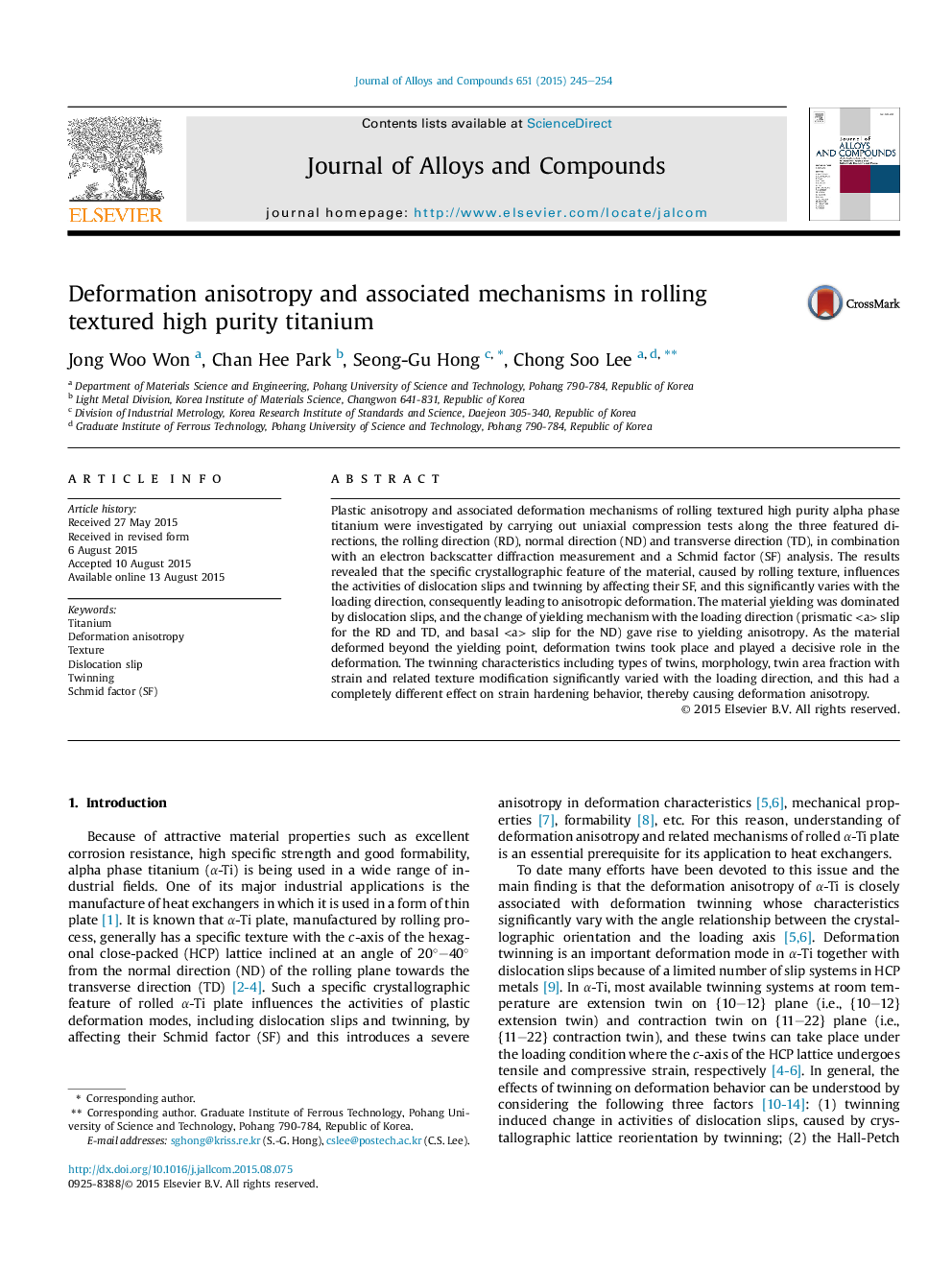| کد مقاله | کد نشریه | سال انتشار | مقاله انگلیسی | نسخه تمام متن |
|---|---|---|---|---|
| 1608043 | 1516242 | 2015 | 10 صفحه PDF | دانلود رایگان |
• Deformation anisotropy related to crystallographic texture was investigated.
• Crystallographic texture influenced the activities of dislocation slips and twinning by affecting their SF.
• This varied with the loading direction, consequently leading to anisotropic deformation.
• Twinning-mediated effects; the Hall-Petch hardening, texture hardening/softening and strain softening.
• Deformation anisotropy was successfully interpreted by considering twinning-mediated effects.
Plastic anisotropy and associated deformation mechanisms of rolling textured high purity alpha phase titanium were investigated by carrying out uniaxial compression tests along the three featured directions, the rolling direction (RD), normal direction (ND) and transverse direction (TD), in combination with an electron backscatter diffraction measurement and a Schmid factor (SF) analysis. The results revealed that the specific crystallographic feature of the material, caused by rolling texture, influences the activities of dislocation slips and twinning by affecting their SF, and this significantly varies with the loading direction, consequently leading to anisotropic deformation. The material yielding was dominated by dislocation slips, and the change of yielding mechanism with the loading direction (prismatic slip for the RD and TD, and basal slip for the ND) gave rise to yielding anisotropy. As the material deformed beyond the yielding point, deformation twins took place and played a decisive role in the deformation. The twinning characteristics including types of twins, morphology, twin area fraction with strain and related texture modification significantly varied with the loading direction, and this had a completely different effect on strain hardening behavior, thereby causing deformation anisotropy.
Figure optionsDownload as PowerPoint slide
Journal: Journal of Alloys and Compounds - Volume 651, 5 December 2015, Pages 245–254
